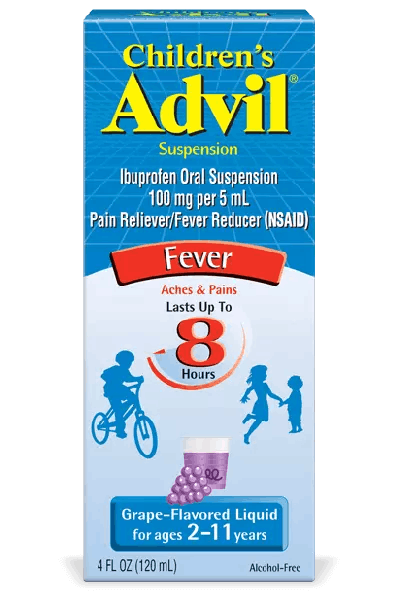Even though it doesn’t always feel great, believe it or not, a fever in an adult can be a good sign. 1,2,3,4,5 As the body’s natural response to infection, a fever can signal a healthy immune system doing precisely what it’s meant to do. 1,2,3,4 Learn more about what causes a fever, related symptoms, how to treat it and when to seek medical care.
What Constitutes a Fever?
When your body temperature rises above normal levels, you have a fever. 1,2,3 The normal average temperature is 98.6°F. Given natural fluctuations based on time of day, activity and environment, the normal range is 97-99.5°F.4 In adults, when your temperature reaches 100.4°F, that is considered a standard-grade fever. 2,4 These are the fever grades in adults based on temperature: 2,4
- Low Grade: 99.6-100.3°F
- Standard: 100.4-102.9°F
- High Grade: 103°F or higher
What’s the Best Way to Take an Adult’s Temperature?
While forehead, ear and strip thermometers are particularly convenient, they aren’t the most accurate option for gauging body temperature.1 Oral and rectal thermometers provide the most accurate reading for adults. 1
What Causes Fever?
Viral infections are the most common cause of fever in adults. 2 Those include the common cold, flu and COVID-19. 3 Bacterial infections, such as urinary tract infections and pneumonia, can also cause fever. 3,4 In fact, many illnesses and activities can raise body temperature, including a reaction to an allergen and becoming overheated in the sun. 4
What Are the Common Symptoms of a Fever?
In addition to throwing off your internal temperature, fevers can occur along with other effects in the body. 1 Here are some common symptoms adults may experience when they have a fever: 1
- Weakness
- Irritability
- The sweats
- Severe headache
- Low or absent appetite
- Dehydration
- Shivering and chills
- Muscle aches
These symptoms are considered normal, so they aren’t necessarily cause for medical attention. 1
When Should I Seek Medical Attention?
If you have a high-grade fever, meaning your temperature hits 103°F or higher, it’s time to call your healthcare provider. 1 Seek immediate medical attention if you have a temperature above 100°F alongside any of these symptoms: 1
- Rash
- Confusion
- Altered speech
- Unusual behavior
- Sensitivity to bright light
- Pain when bending forward along with a stiff neck
- Chest pain or problems breathing
- Pain during urination
- Persistent vomiting
- Dehydration
- Abdominal pain
- Seizures or convulsions
How Do I Treat a Fever?
While most fevers go away on their own within a few days, you can still reduce your fever and take steps to ease any discomfort. 1 Here’s what you can do to a treat a fever: 1,2,3,4,5
- Rest
- Dress lightly
- Hydrate
- Use a cool compress
- Take a lukewarm bath
- Eat light meals, if hungry
- Take a fever reducer, such as ibuprofen or acetaminophen
While a fever is no fun, they happen to all of us and often show a healthy immune system at work. For help reducing your fever and soothing other unique symptoms, head to Advil’s Relief Finder. When used as directed, ibuprofen can provide fast and powerful relief. Advil offers over the counter fever and pain relief medications containing ibuprofen for a variety of symptoms and ailments. Quell your pain at night with Advil PM and relieve cold and flu symptoms with Advil Multi-Symptom Cold & Flu.
Source Citations:
- Fever. Mayo Clinic. https://www.mayoclinic.org/diseases-conditions/fever/symptoms-causes/syc-20352759?p=1. Accessed 3/30/23.
- Fever. Cleveland Clinic. https://my.clevelandclinic.org/health/symptoms/10880-fever. Accessed 3/31/23.
- Fevers in adults, children and toddlers: When to worry. Stamford Health. https://www.stamfordhealth.org/healthflash-blog/primary-care/fever-in-adults-when-to-worry/. Accessed 3/31/23.
- Fever. Cedars Sinai. https://www.cedars-sinai.org/health-library/diseases-and-conditions/f/fever.html Accessed 3/31/23.
- Fever in Adults. Harvard Health. https://www.health.harvard.edu/diseases-and-conditions/treating-fever-in-adults Accessed 3/31/23.








